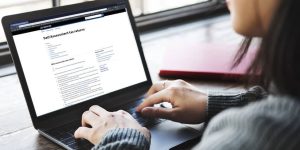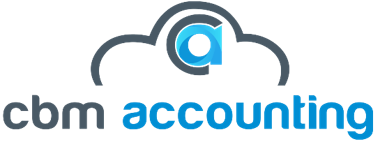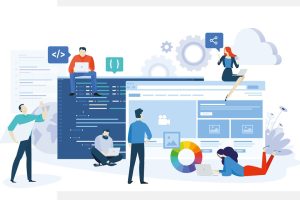If you are self-employed or have rental income, you are among the 12 million individuals who must pay self-assessment income tax, and you should be conscious that midnight on January 31, 2021, is a crucial day for you.
That is when you must have submitted your yearly tax return to HMRC and paid all of your major payments for the year. Because of the epidemic, there are certain modifications this year, but the main principles still apply.
People who have been self-employed for a while are likely to be familiar with the processes, but if you are new to self-employment, it is critical to understand your filing and payment requirements to avoid HMRC penalties.
Table of Contents
Determining your status as a self-employed person:
Estimating Your Tax Liability:
Arrangements for payment during the pandemic:
CMB Accounting can assist you with your tax return:
Determining your status as a self-employed person:

Confirming your status is one of the first things you should do. If you work for only one company and are provided a regular wage, you are considered an employee, and your employer is required to extract income tax and National Insurance obligations at source under the PAYE scheme.
You may potentially continue working for the same business on a self-employed basis and get payment without deduction of tax if you have quit full-time employment and work for yourself (on your account). HMRC, on the other hand, would query if you were truly self-employed and would conduct tests to prove your position.
- The HMRC website has an Employment Status Indicator that you may use to determine if you are truly self-employed.
- The tool will ask you a range of questions about your client contract, your job and duties, your pay, and any benefits you get.
- HMRC will determine your tax position based on the answers you submit.
- Working for several clients makes the situation easier. In general, if you manage your small firm and are responsible for its success or failure, you will be considered self-employed.
- You must provide your equipment for the job, you must bid for work and submit invoices, and you are free to work for many clients.
Self-Assessment Registration:

You must register with HMRC as soon as possible if you are truly self-employed. However, keep in mind the registration deadlines.
The fiscal year spans from April 6 to April 5. If you started working for yourself before April 5, 2020, you must register by October 5, 2020. You may be subject to a penalty if you have not yet registered.
When you became self-employed later April 5, 2020, you must register by October 5, 2021, except you, can do so at any time before that date.
HMRC will create your account once you have answered all of the questions, and you will get a letter with your Unique Taxpayer Reference (UTR) number. After that, you will get another mail containing an account activation code. You may file your tax return at any moment before the deadline once you have enrolled in your account.
Estimating Your Tax Liability:
You should define your accounting period when you first start your self-employed firm. This usually lasts a year from the time you start trading. As a result, if you begin your business on January 1, your accounting period will finish on December 31.
During the accounting period, you or your accountant records all of your revenue, as well as all of the business, ‘s allowed expenses. HMRC now allows you to keep track of this data in two ways: cash and accumulation.
If you own a business, your accountant will take care of all of your bookkeeping as well as statutory and management accounts, online accounting, and cash flow and financial forecasts. As a result, when the fiscal year ends, you will have all of your data on hand.
- This is known as the cash basis, and it allows you to report real receipts and expenditures throughout the accounting period.
- In the January-December example, if you invoiced a client £100 on December 10th and got payment on January 10th, you would not have to include that £100 in your income until the following year’s filing.
- The accruals basis, which is the standard technique, requires you to record money owing to you during your accounting period.
- Therefore, even if you had not received the money, that £100 invoice from December would be included in your income tax return.
- You can determine your profit from the firm once you have all of the information on income and spending.
- Other factors to consider are capital expenditure allowances, losses from previous years, and stock adjustments, but the basis of your tax liability is your business profit – the difference between revenue and expenditure.
Filing a tax return:
You will need to file an annual self-assessment tax return once your self-employed firm is up and operating. You have the option of filing a paper return or filing online.
If you are filing a paper return, you must send it to HMRC by October 31. The deadline for submitting online is January 31.
You must complete your online return by December 30 if your position is more complicated and you have some earnings from work where tax is deducted under PAYE and some from self-employment.
Regardless of how you file, you must correctly answer all essential questions about your business, your income and expenditures related to the business, and any income from other sources, such as interest, benefits, or capital gains.
The online form will calculate your earnings from the business and tell you how much tax and National Insurance payments you must pay based on the information you supply on income and expenditure.
The income and spending numbers you supply are for the tax year that concluded on April 5, and they pertain to your self-employed earnings. As a result, you must provide data relating to your self-employed earnings for the period ending 5 April 2020 by 31 January 2021.
If you began your business after April 6, 2020, you must file a tax return by January 31, 2022, which will include self-employed profits between April 6, 2020, and April 5, 2021.
Estimating your payments:
The payments you make are calculated based on your profitability, not your self-employment income. Suppose you earned a profit of £26,000 on a £35,000 income in this exaggerated scenario.
Like any other taxpayer, you have a personal allowance – the amount you are permitted to earn before you pay any income tax. For the 2020-21 tax year, the personal allowance is £12,500. As a result, you would just have to pay tax on the remaining £13,500 of your earnings.
For taxable income between £12,501 and £50,000, a figure of £13,500 would be taxed at the current rate of 20% (the basic rate). If you earn more than £50,001, you will have to pay tax at a higher rate of 40% on the amount over £50,000.
- You may be required to pay two types of National Insurance contributions, Class 2 and Class 4, in addition to income tax.
- If your profits exceed £6,475 in the 2020/21 tax year, you must pay Class 2 payments.
- You will be charged £3.05 per week or £158.60 per year.
- If your profits for the 2020/21 tax year exceed £9,500, you must make extra Class 4 payments.
- Profits between £9,500 and £50,000 will be taxed at 9%, and profits over £50,000 will be taxed at 2%.
Making payments:
The deadlines for self-assessment tax payments are 31 January and 31 July.
You must pay any tax payable on the earnings calculated in your return by 31 January.
In this case, you would have to pay tax on your £13,500 profit, as well as any National Insurance contributions.
You also make your first account payment for the tax bill due the following January – January 31, 2022. HMRC usually calculates this based on your current responsibility, so you would pay half of the tax and NI payments due on £13,500 and the other half by July 31.
Those two payments on account are then subtracted from the tax payable on your profits when you file your tax return in January 2022. Therefore, if your earnings grew by £2500, you would only have to pay tax on that amount plus the first payment on account – which would be based on profits of £16,000 – on January 31.
You may be capable of paying in installments rather than making a single lump-sum payment, depending on your specific circumstances. It is critical to pay by the deadlines or install dates in any case. If you do not, you will be charged interest on any late payments.
Arrangements for payment during the pandemic:
During the epidemic, the government and HMRC recognized the difficulties experienced by many self-employed persons and implemented a variety of steps to assist them.
Grants to compensate for lost income and Time to pay extensions are available to anybody unable to satisfy their payment obligations by the usual dates.
Grants were available under the Self-Employment Income Support Scheme to compensate for lost earnings. This gift, however, qualifies as income for the period and must be reported in your tax return due by January 31, 2022.
The amount of tax payable will be determined normally, so you will include any trade revenue, any allowed company expenses, and any grants you have received.
The first payment extension permitted consumers to postpone their account payments due from July 31, 2020, until January 31, 2021. A second extension, announced in September 2020, enabled anyone unable to meet his or her 31 January obligations due to pandemic-related issues to set up a 12-month payment plan.
The postponed July 2020 payment on account, the tax payable on earnings on 31st January 2021, and the two payments on account due on 31st January and 31st July 2021 would all be covered by this second extension. Self-employed persons with tax liabilities of up to £30,000 are eligible for the payment plan.
You would still be required to complete your yearly Tax return by January 31, 2021, and you would be responsible for paying interest on any liabilities covered by the payment plan. HMRC, on the other hand, will not levy late payment penalties on any unpaid sums.
CBM Accounting can assist you with your tax return:
Self-assessment tax is difficult to understand, especially if you are new to self-employment or have had issues during the epidemic. We can assist you if you require expert guidance or support in filing your tax return. We can assist self-employed individuals as well as corporations with their Tax returns.
However, any Covid or non-Covid related our helpful small company accountants and employees could handle tax concerns. Check out our most recent Tax advice, and contact CBM Accounting for a free accounting quotation right away!

